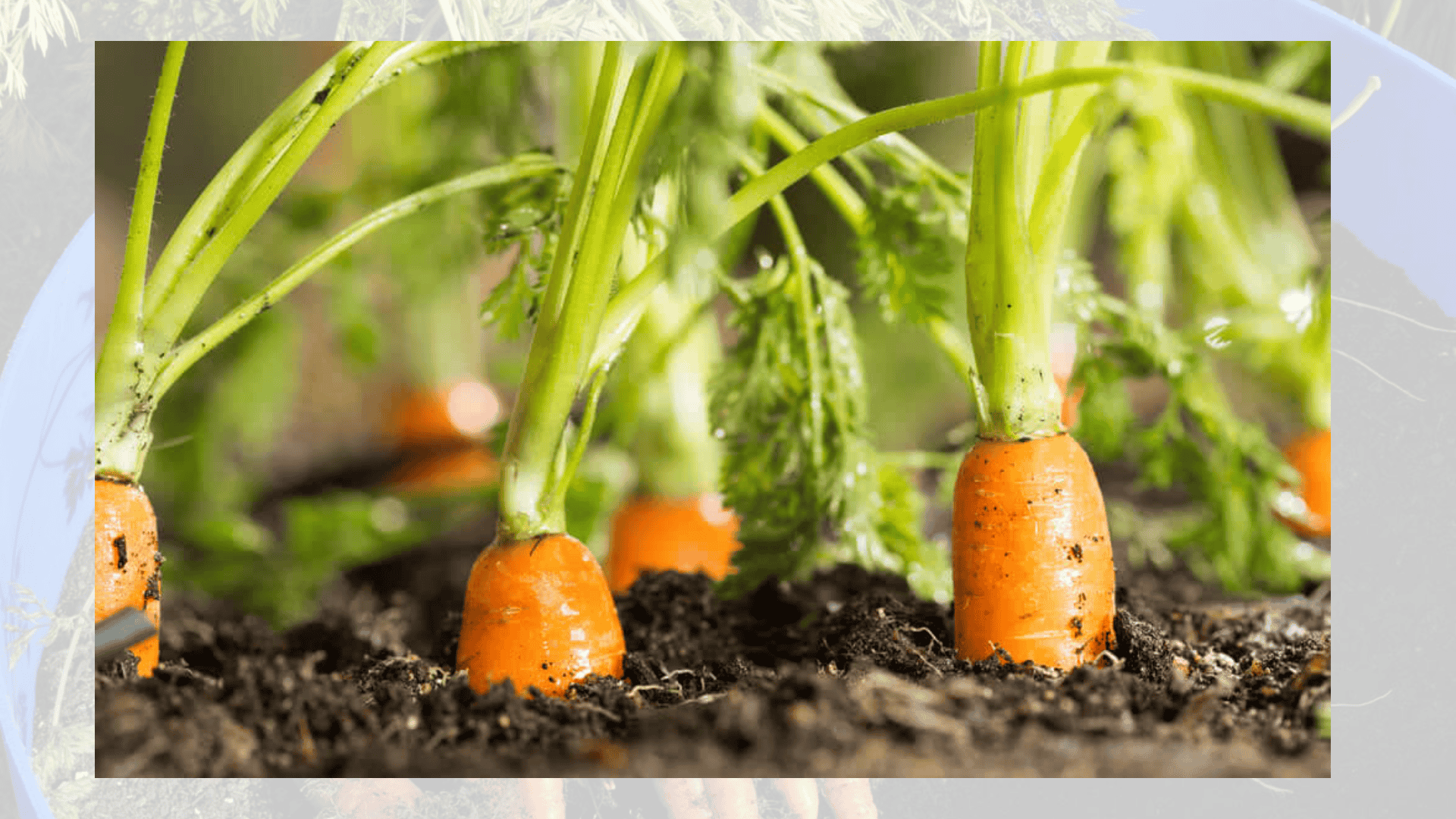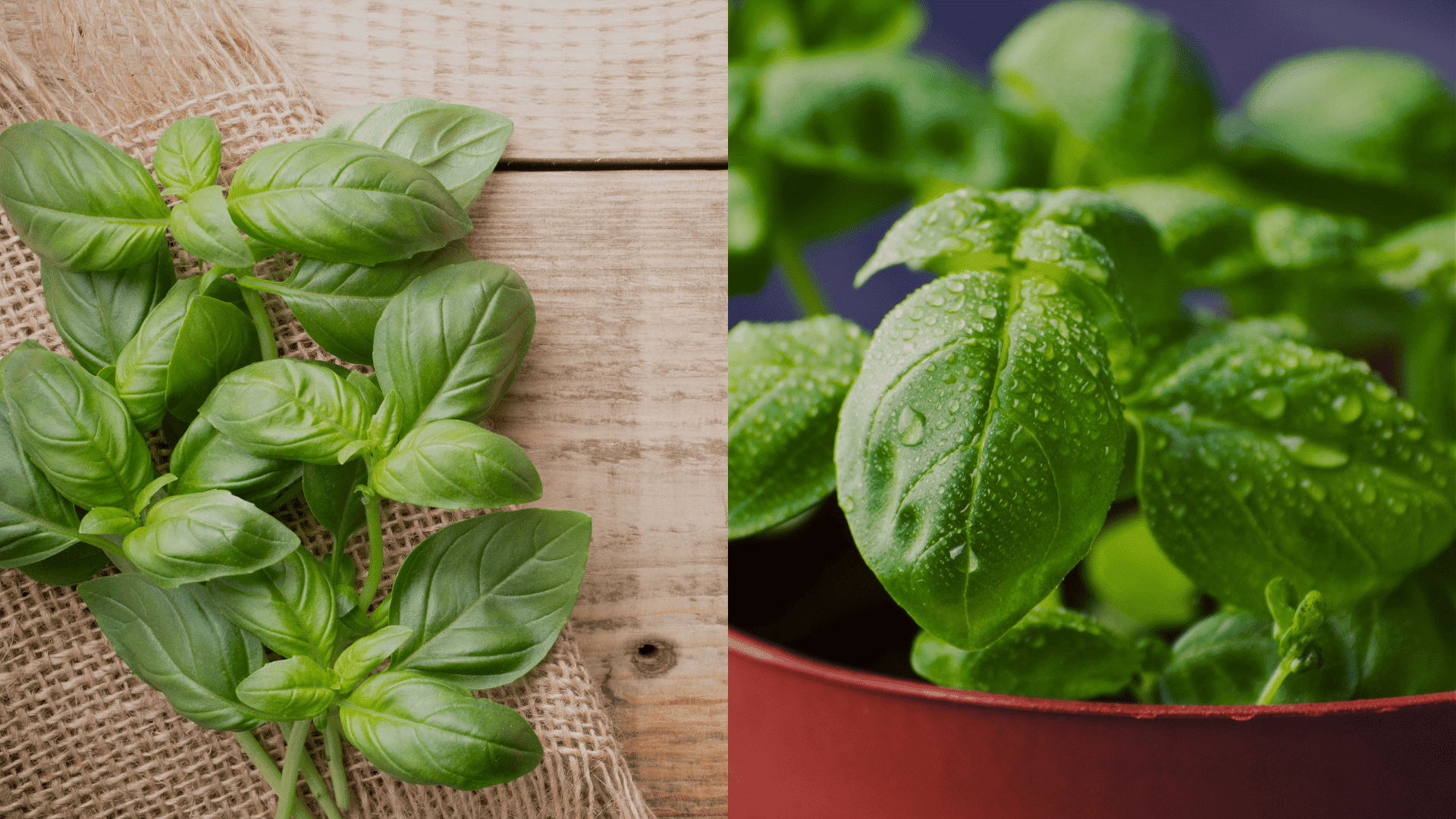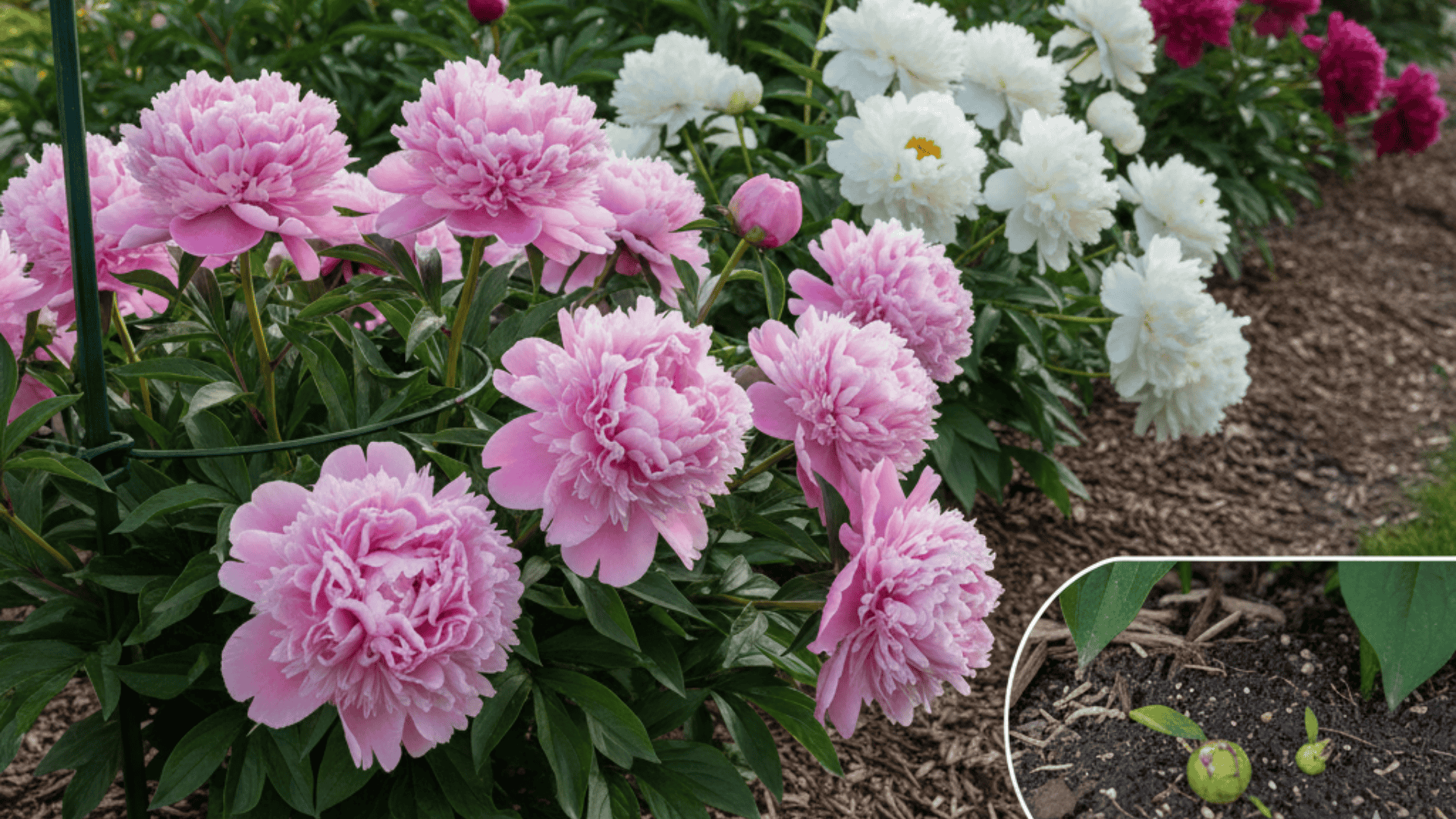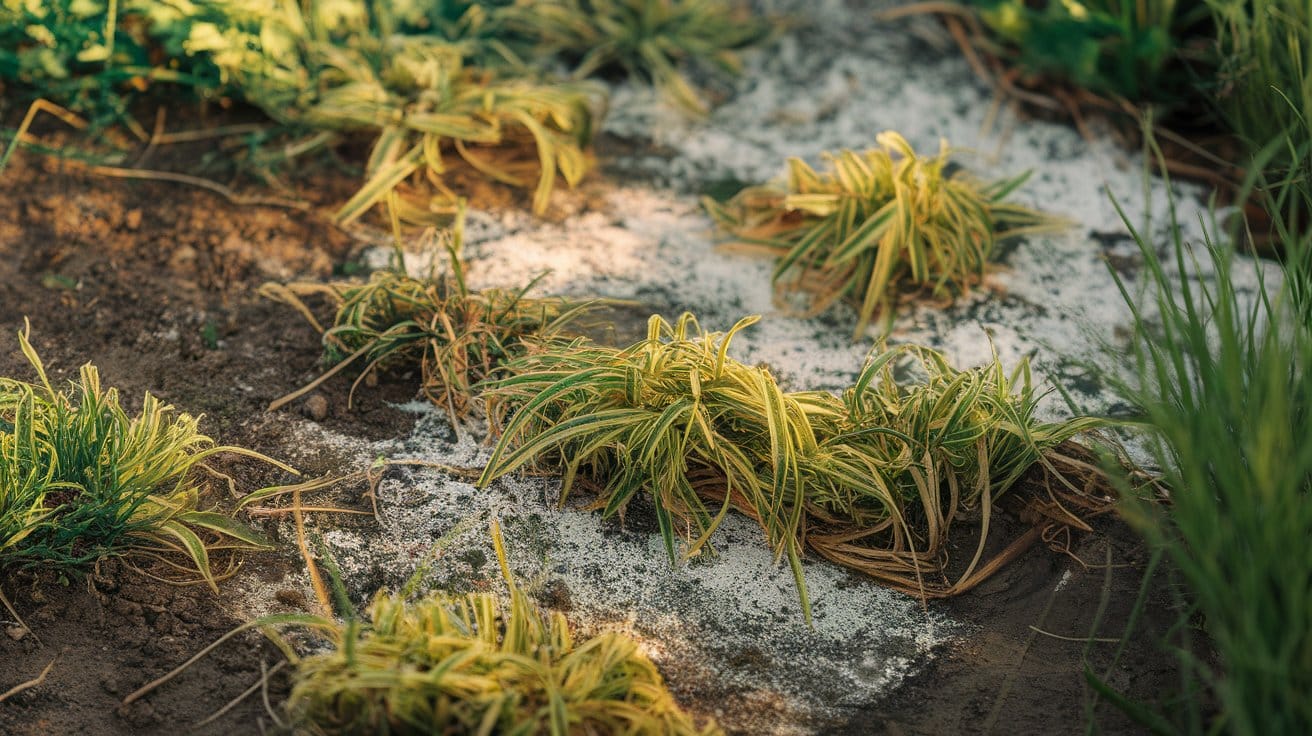Growing carrots doesn’t require a garden; just a pot, good soil, and sunlight will do its magic.
Container-grown carrots develop evenly shaped roots and thrive under controlled moisture and soil conditions.
Containers minimize pest problems and make it possible to produce healthy crops even in compact spaces.
This growing method is suitable for both beginners and experienced gardeners.
This article outlines every step involved in growing carrots in containers, including selecting containers, preparing the potting mix, sowing seeds, caring for carrot seedlings, and harvesting mature roots.
With balanced care, container gardening can yield crisp, sweet carrots in almost any environment.
Why Growing Carrots in Containers?
Growing carrots in containers is an easy and space-saving way to enjoy fresh, healthy roots.
Container gardening allows full control over soil structure, moisture, and sunlight, helping carrot roots grow straight and evenly in loose, stone-free soil.
Reliable watering prevents cracks and improves texture, while pots reduce exposure to soil pests and diseases common in garden beds.
Containers can also be moved easily to sunnier spots, ensuring steady light throughout the day. With the right setup, carrots thrive beautifully in small spaces.
How to Grow Carrots in Containers: Step-by-Step
A step-by-step look at growing carrots in containers, showing how to choose the right pot, use soft soil, water correctly, and care for healthy, tasty carrots.
Tools and Materials Needed for Growing Carrots in Containers:
| Category | Items Needed |
|---|---|
| Containers | Deep pots, fabric bags, or planters with drainage |
| Soil | Lightweight soilless potting mix |
| Seeds | Compact carrot types (Parisian, Nantes, Chantenay) |
| Watering | Can with a fine spray nozzle |
| Fertilizer | Low-nitrogen fertilizer |
| Tools | Trowel, gloves, small hand fork |
| Extras | Saucer, shade cloth, thermometer |
| Storage | Perforated bags, fridge space |
Step 1: Choosing the Right Container to Plant Carrot

Depth is the main factor for success.
Containers that measure 12–20 inches deep give roots enough space to grow straight.
Each pot should have several drainage holes to prevent waterlogging.
Any container, plastic, fabric, ceramic, works well if it drains well. Ensure multiple holes at the base. If you use a saucer, empty excess water.
Choosing sturdy containers that retain moisture yet allow excess water to drain helps maintain balanced growing conditions.
Step 2: Ideal Varieties of Carrots for Containers
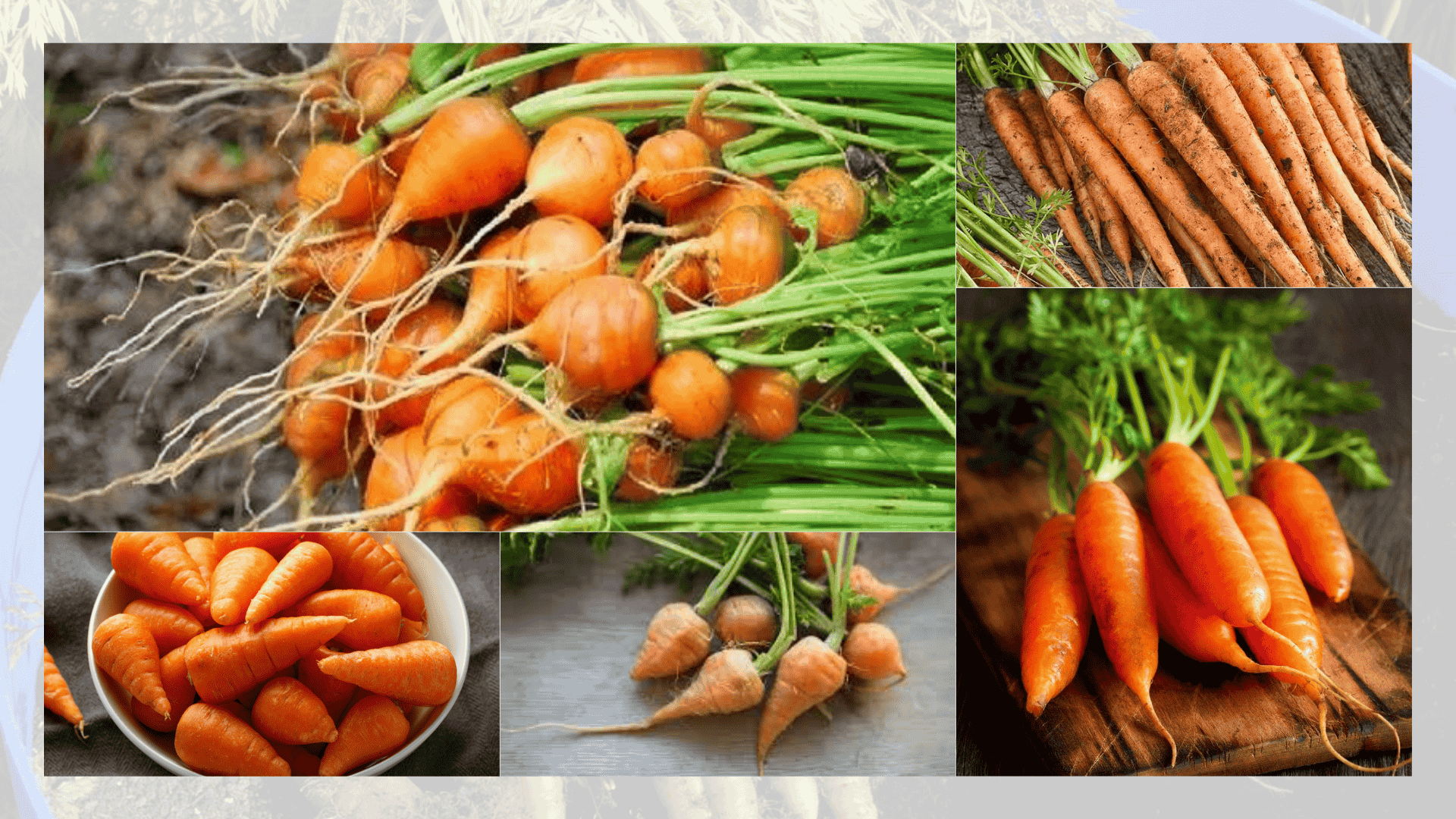
Compact and short-root carrot types grow best in small spaces.
For full-length carrots, use deeper containers so roots can grow without bending.
Choosing early-maturing types also allows multiple harvests throughout the year.
These varieties mature quickly, stay tender, and develop smooth, sweet roots. Great carrot variety options include :
Step 3: Soil Preparation and Sowing the Carrot Seeds

For the best results in growing carrots in containers, use a loose, soilless potting mix that drains easily.
Avoid heavy garden soil since it compacts and leads to misshapen roots.
Fill the container almost to the top, leaving about an inch for watering space. Moisten the mix before sowing.
Sow seeds ¼ inch deep and 1 inch apart, keeping the soil evenly moist throughout germination.
Carrot seeds sprout slowly, often taking 14–21 days to grow depending on temperature, moisture levels, and light exposure.
Step 4: How Much to Water Carrots Growing in Containers?

Containers lose moisture faster than ground beds.
Keep soil evenly damp but not soaked.
Use a fine spray nozzle or watering can with small holes to avoid disturbing the seeds.
Carrots require moderate feeding.
Apply a low-nitrogen fertilizer every four to six weeks to promote root growth.
Avoid fertilizers rich in nitrogen since they produce leafy tops and small roots. Always water after fertilizing to spread nutrients evenly
Step 5: How Much Sunlight to Give to Carrots Growing in a Container?
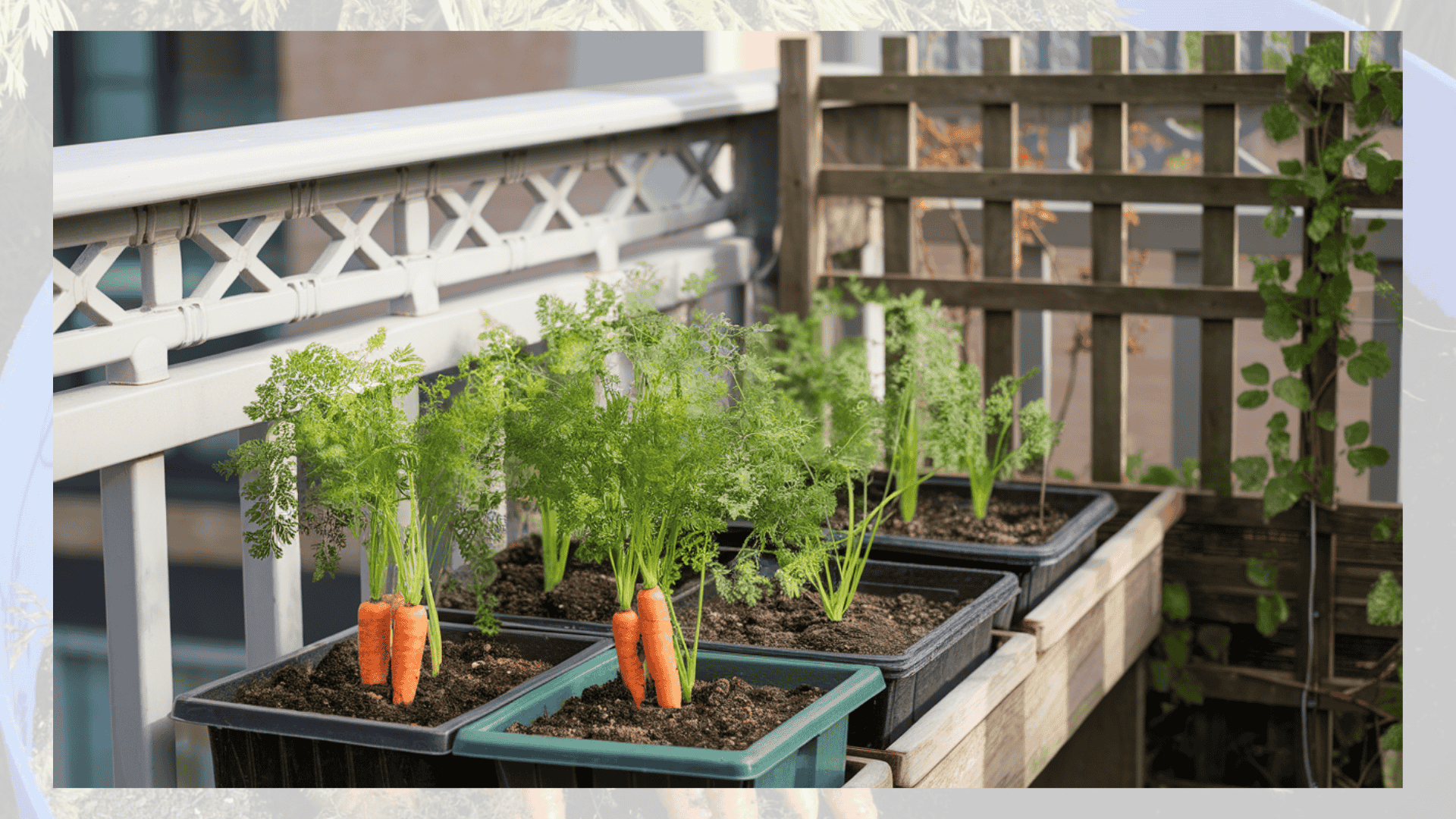
Carrots need 6–8 hours of sunlight each day.
Temperatures between 55°F and 75°F encourage smooth growth and rich color.
In warmer states, provide slight afternoon shade to protect roots from heat stress.
In cooler areas, containers warm up more quickly than garden beds, allowing earlier spring planting.
Turning containers occasionally ensures even exposure to light.
Final Step: Harvesting Carrots in Containers
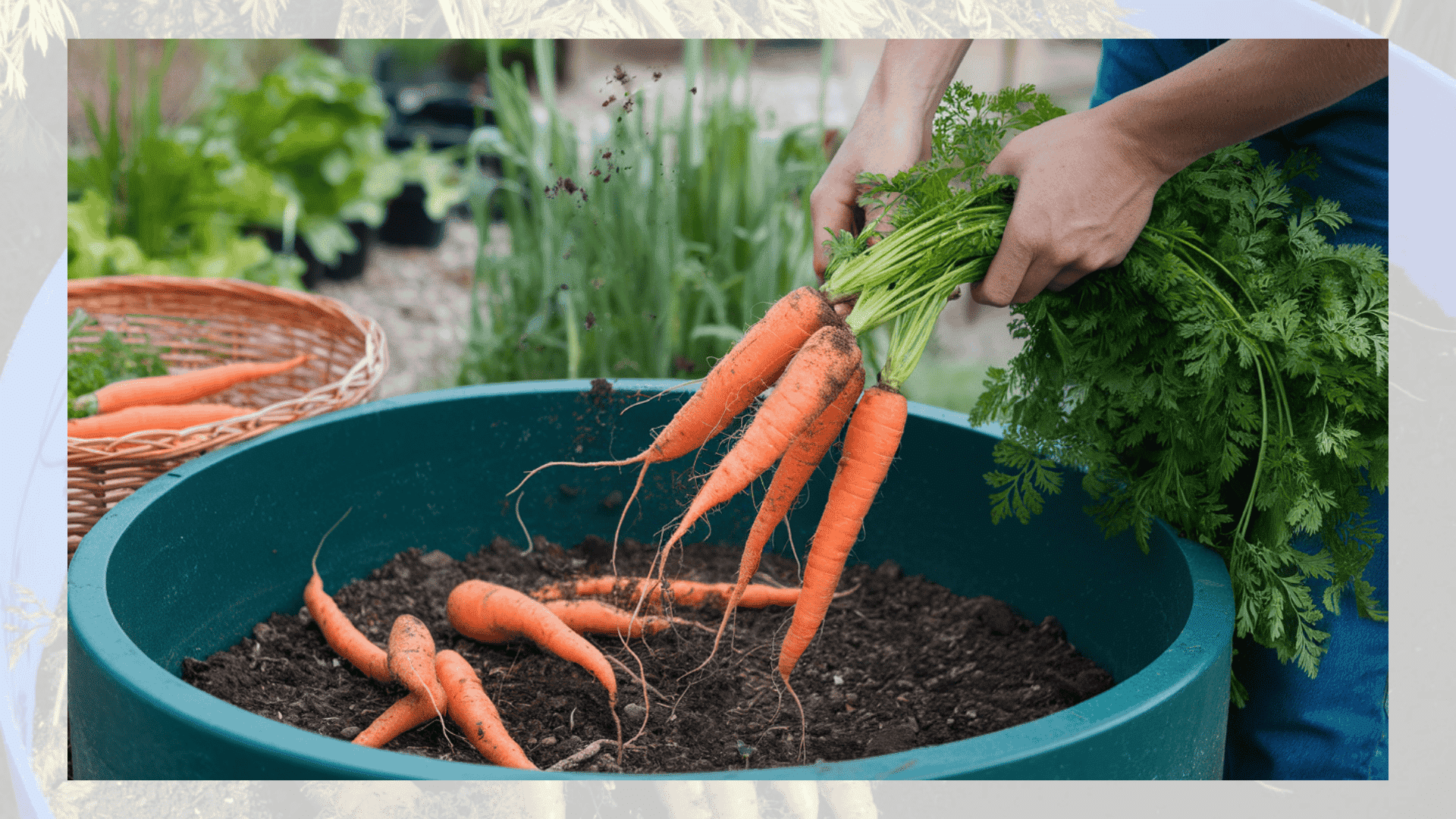
Carrots are ready when their tops reach about ¾–1 inch in diameter or after 50–80 days, depending on the type.
Loosen soil carefully before pulling. If roots resist, tilt the pot and slide them out.
After harvesting, remove the green tops to preserve freshness.
Store the roots in a cool, dark place or refrigerate them in perforated bags.
Homegrown carrots often taste sweeter and more flavorful than store-bought ones because they are harvested at their peak.
Growing Carrots in Containers YouTube Tutorial
Now that you know how to grow carrots in containers in 6 easy steps, you can take reference for visual clarity from this amazing in-depth video by Alex Grows Food.
How to Transplant Carrot Seedlings in Containers?

When growing carrots in containers, transplanting can be challenging because the roots are delicate and can easily become damaged.
That’s why transplanting carrot seedlings is usually not recommended.
If moving them is unavoidable, handle the process gently and act early, before roots grow long.
Keep a small block of soil around each plant to reduce stress.
Biodegradable pots can also help by allowing roots to establish with minimal disturbance.
Even when handled carefully, some seedlings may develop slightly curved roots, but most will continue to grow well once settled back into loose, well-drained soil.
How to Care for Carrot Seedlings in Containers?
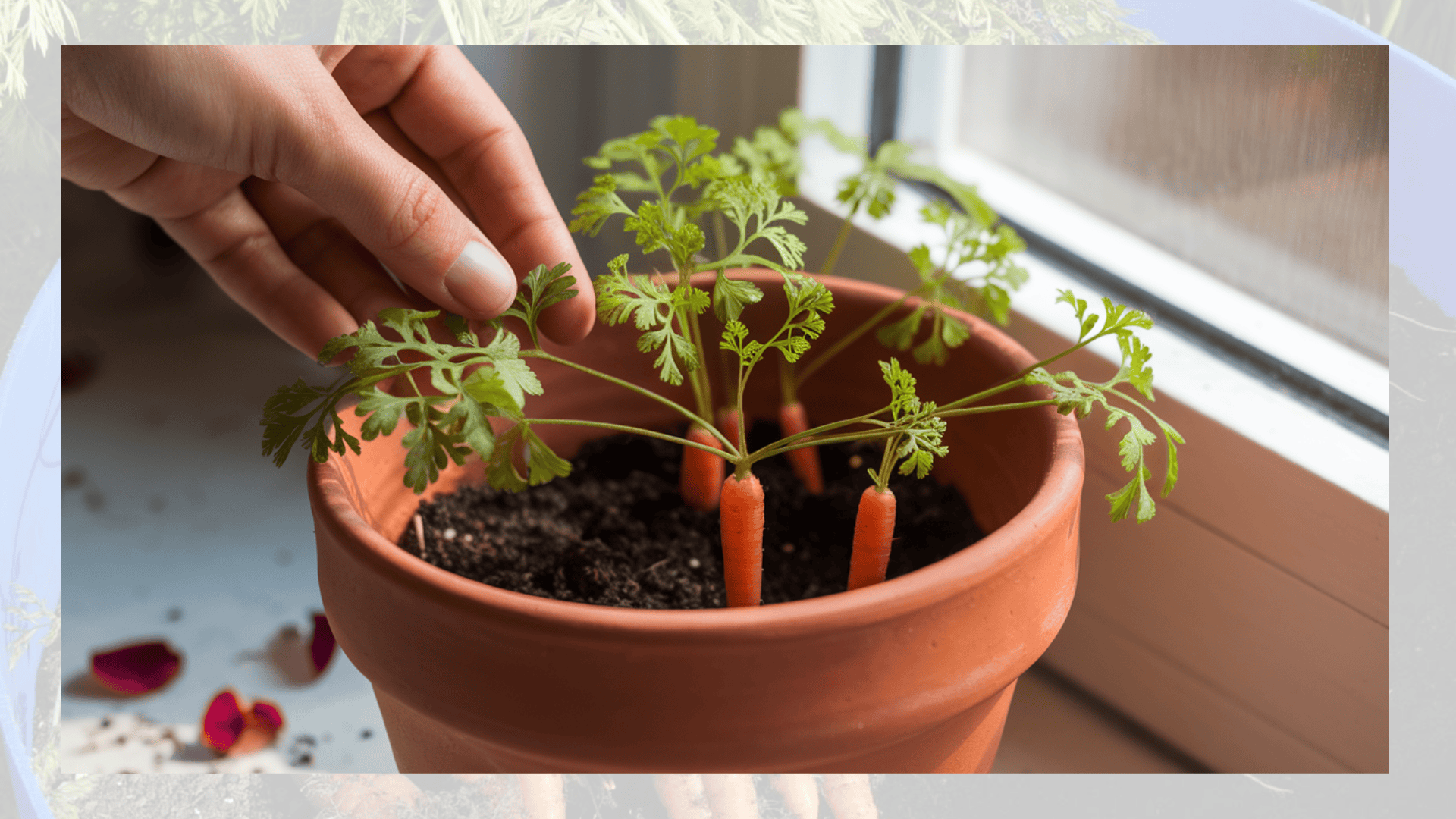
Carrot seedlings need gentle care, steady watering, and space to grow strong, producing smooth, healthy roots ready for harvest.
1. What Do Healthy Carrot Seedlings Look Like?
Carrot seedlings begin as thin, grass-like leaves with one taproot that later develops into the carrot.
Direct sowing in containers prevents root damage and irregular growth. With steady care, seedlings grow into uniform roots.
2. How and When to Thin Carrot Seedlings?
Once seedlings are about 1 inch tall, thin them gently so each plant stands 1½–3 inches apart.
Crowded plants compete for nutrients, causing thin or twisted carrots.
Thinning helps each plant receive enough air, water, and light. Water right after thinning to reduce transplant shock.
3. How to Keep Carrot Seedlings Healthy?
Consistent moisture is very important.
Dry soil stops root development and causes cracks. Avoid shifting the container once seedlings are growing; movement can break delicate roots.
Keep them in full sunlight for sturdy leaves and uniform roots. Remove any weeds that appear to reduce competition for nutrients.
How to Tackle Common Problems While Growing Carrots?
Even with proper care, container-grown carrots may develop thin roots, cracks, or pest issues, but understanding these problems early helps protect the harvest and maintain healthy growth.
1. Thin or Pale Roots: Caused by compact soil, poor fertility, or low sunlight. Use a loose mix, space plants properly, and ensure full sun exposure.
2. Forked or Twisted Carrots: Roots meet obstacles or get disturbed. Keep soil free of stones and avoid overhandling.
3. Cracks, Splits, or Lumps: Occur from inconsistent watering. Maintain even moisture levels.
4. Green Shoulders: Exposure to sunlight turns the tops green. Add more soil around the base.
5. Pest Issues: Root maggots or flies can appear if containers are low. Keep pots raised and use fine mesh covers.
Conclusion
Growing carrots in containers is an easy and dependable way to enjoy fresh, flavorful carrots at home.
With deep pots, soft soil, consistent watering, and plenty of sunlight, carrots grow smooth and sweet in any space.
Containers make gardening simple; pots can be moved for better light, kept pest-free, and managed with little effort.
This method suits patios, balconies, and even small yards. Start small, and enjoy fresh harvests all year.
Get a pot, some soft soil, and a few seeds, start growing carrots in containers today, and enjoy fresh, homegrown carrots soon.
Have any questions about container gardening? Share them in the comments below!
Frequently Asked Questions
How Deep Should A Container Be For Carrots?
A depth of 12 inches suits short carrot types, while long ones need 18–20 inches. Adequate depth supports straight, uniform roots and prevents overcrowding.
How Long Do Carrots Take To Grow In Containers?
Carrots mature in 50–80 days, depending on type and temperature. Consistent sunlight, watering, and nutrient balance ensure proper root growth and full flavor.
Can I Reuse The Soil For The Next Carrot Crop?
Refreshing or replacing soil after each harvest maintains texture and nutrients. Adding compost or a new mix prevents compaction and keeps root development steady.
Why Are My Carrot Seedlings Not Growing Well?
Poor growth often results from dense mix, limited sunlight, or irregular watering. Ensure loose soil, six hours of daily light, and even moisture for strong seedlings.

